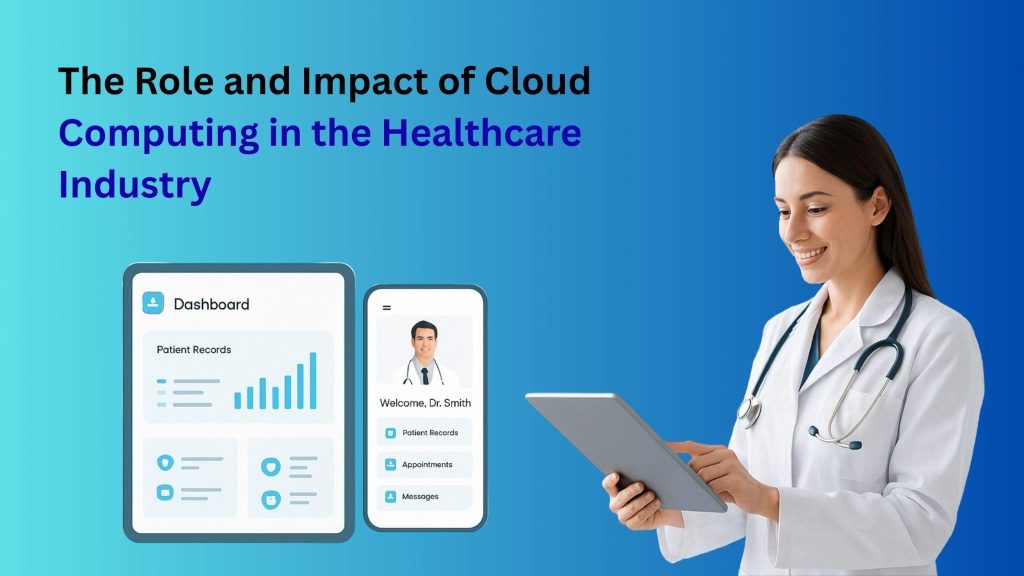
In today’s digitized world, everything has been integrated with cloud computing, as it stores a vast amount of data, facilitates networking, and enables internet analytics. So, the healthcare industry has also been integrated with cloud computing after the pandemic. It supports the healthcare industry in many ways, such as monitoring of medical data, large storage capacity for Electronic healthcare records, and more. Let’s go further and know the role and impact of cloud computing in the Healthcare Industry, and the advantages, applications of the healthcare industry, and if you’re thinking of crafting future-ready solutions, hire healthcare developers.
What is cloud computing in the Healthcare Industry?
Cloud computing in healthcare refers to storing, managing, and processing medical data through the internet. This allows healthcare organizations to access computing resources and data storage without the need for on-site hardware and infrastructure. The Healthcare Cloud Computing market size reached USD 54.69 billion in 2025 and is forecast to grow to USD 93.41 billion by 2030, reflecting an 11.3% CAGR.
Cloud computing offers various applications such as telemedicine, remote patient monitoring, and transforming healthcare into a more efficient and more.
Benefits of Cloud Computing in the Healthcare Industry
Integrating cloud computing in the healthcare industry offers numerous benefits.
1. Reduces Healthcare Cost
As cloud computing in the healthcare industry reduces human interventions, so as the utilization of resources to maintain the data, manage, and secure the data. With the integration of cloud computing, costs have been reduced, which has vastly reduced spending on traditional methods. In cloud computing, it helps to store, manage, and secure the patients’ data, which eases the work of doctors, and they can easily catch the patient’s disease.
2. Easy Interoperability
Interoperability is a concept that focuses on establishing data integrations with entire healthcare systems, irrespective of where patients’ data is stored or what its origin. This significantly results in interoperability systems powered by healthcare cloud solutions, enabling the institutes to access patients’ data easily, and they can even distribute the patients’ data to other institutions in some other medical emergency.
3. Ownership of Data by Patients
Cloud computing stores a vast amount of individual personal data while maintaining the security regulations. This approach helps patients participate in the decision-making process, educating them about healthcare factors and working for their betterment.
4. Enhances Collaboration
Integration of cloud solutions can be beneficial for patients as well as doctors. Before visiting for a consultation, patients don’t have to carry files and reports with them, and can easily access their medical data with history records of dosage and treatments.
5. Increases Patients’ Experience
Cloud computing solutions provide real-time data insights that support doctors in catching early disease signs, and patients can keep track of their disease history records, which significantly improves patients’ experience.
Use cases of Cloud Computing in healthcare
Let’s know some use cases of cloud commuting in healthcare.
1. Telemedicine
This approach is beneficial for patients as they don’t have to make frequent visits to clinics. They can get consultation via video conferencing and through other technologies.
2. Electronic Health Records(EHRs)
Cloud-based EHR systems allow healthcare providers to access and share patients’ medical records and other data from any device with an internet connection.
3. Clinical Trial Management
Cloud-based systems support users in managing and analyzing data from clinical trials, improving the efficiency and accuracy of the research process.
4. Medical Imaging
Cloud-based systems help in storing and sharing medical images, such as X-rays, MRI scans, and allow healthcare professionals to access them from anywhere.